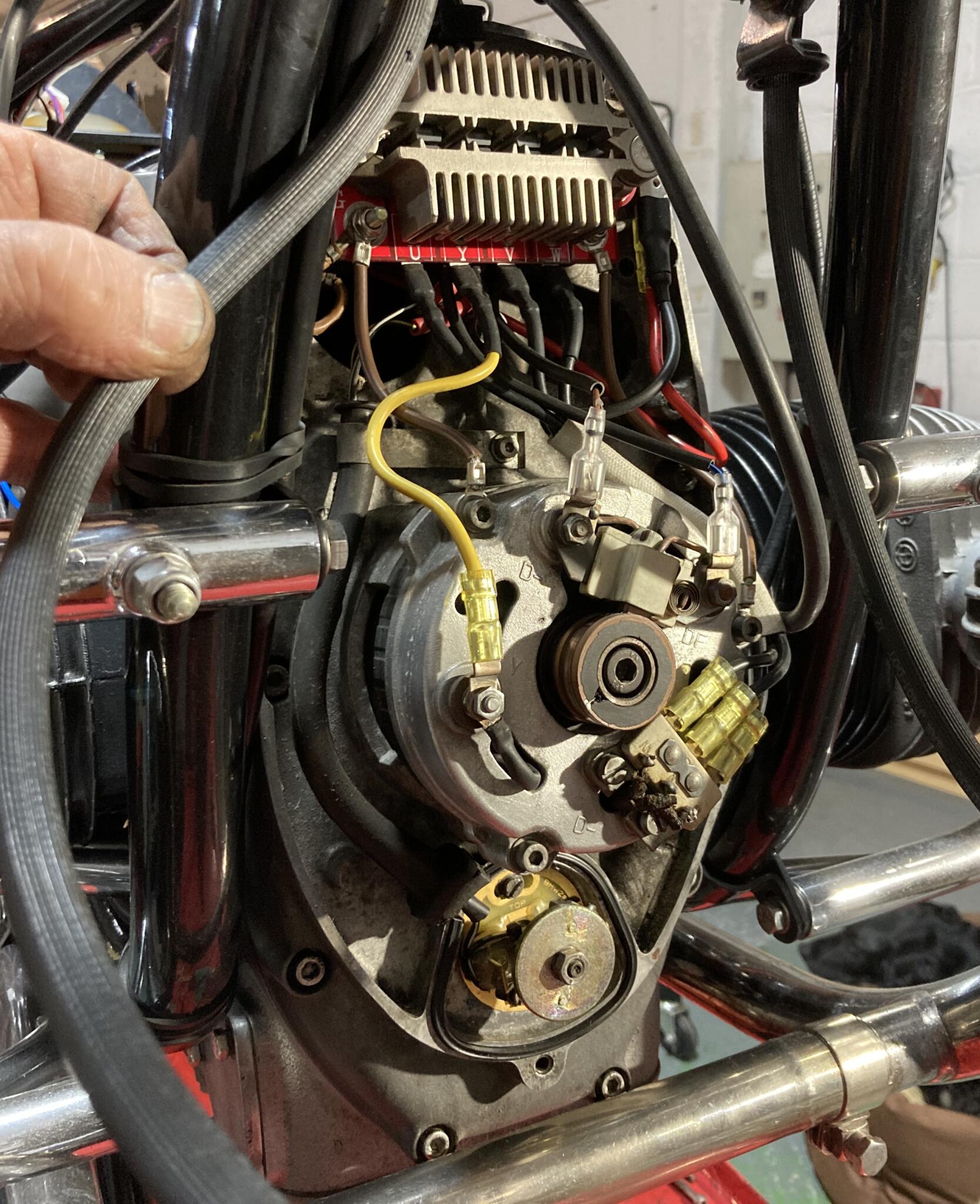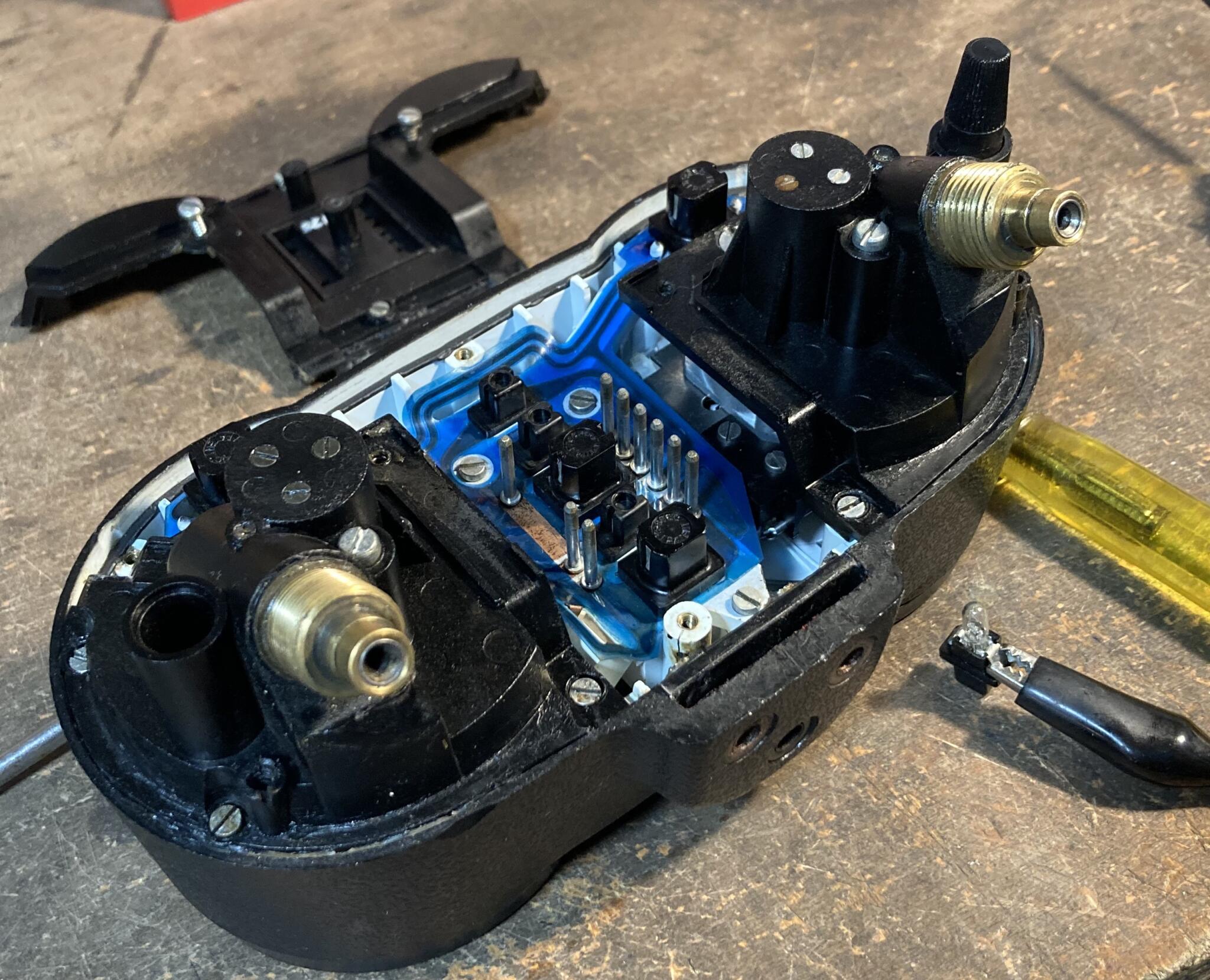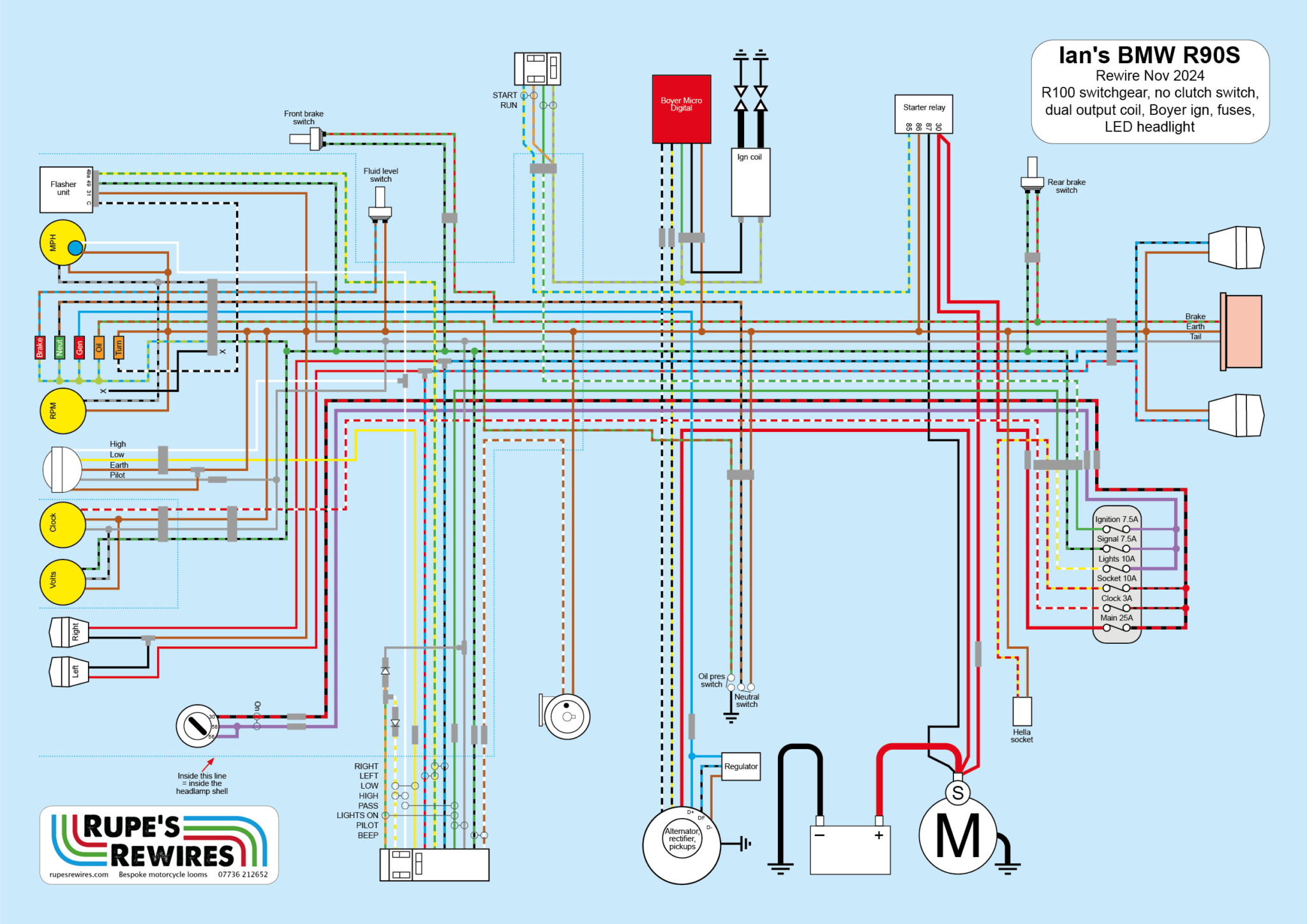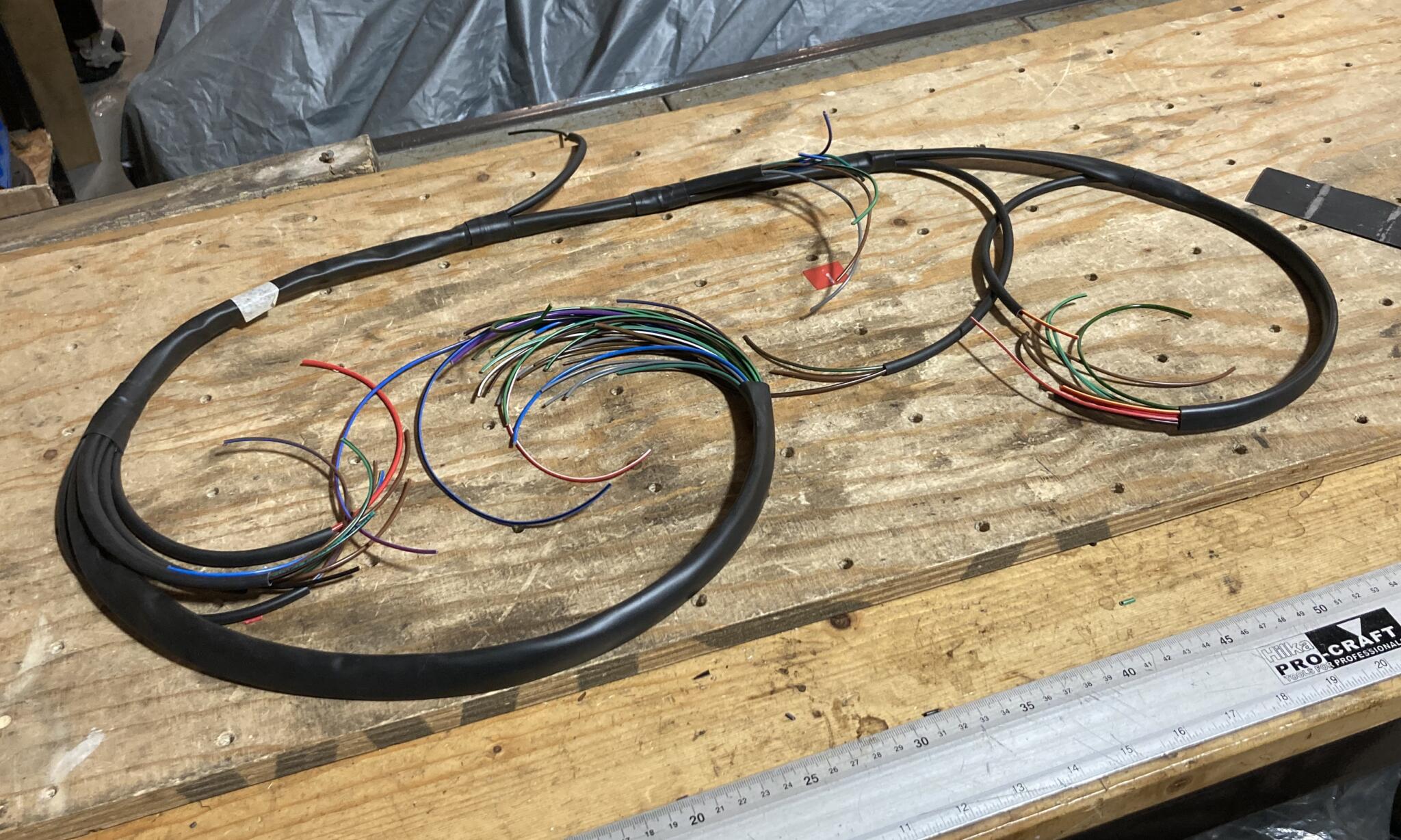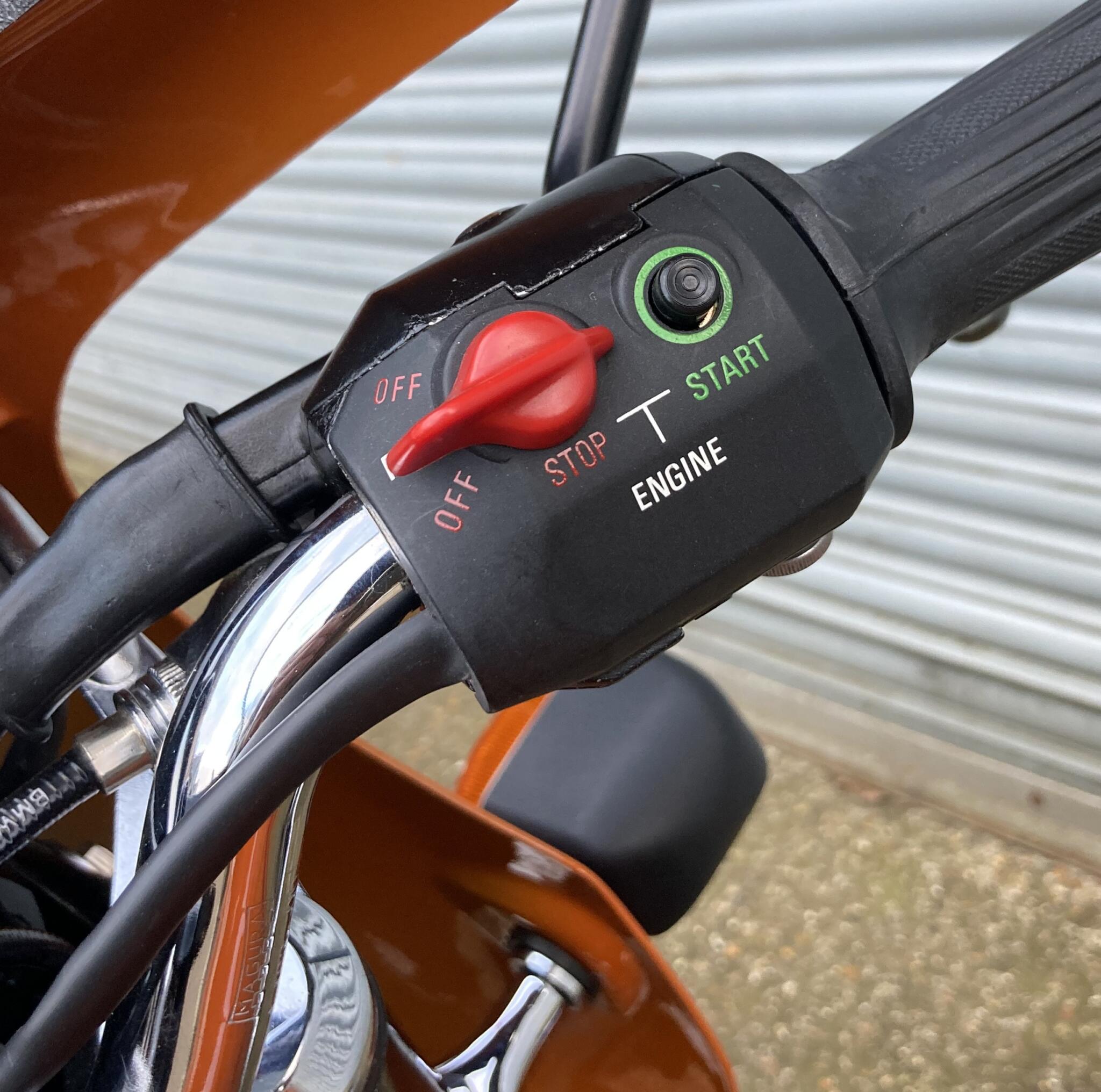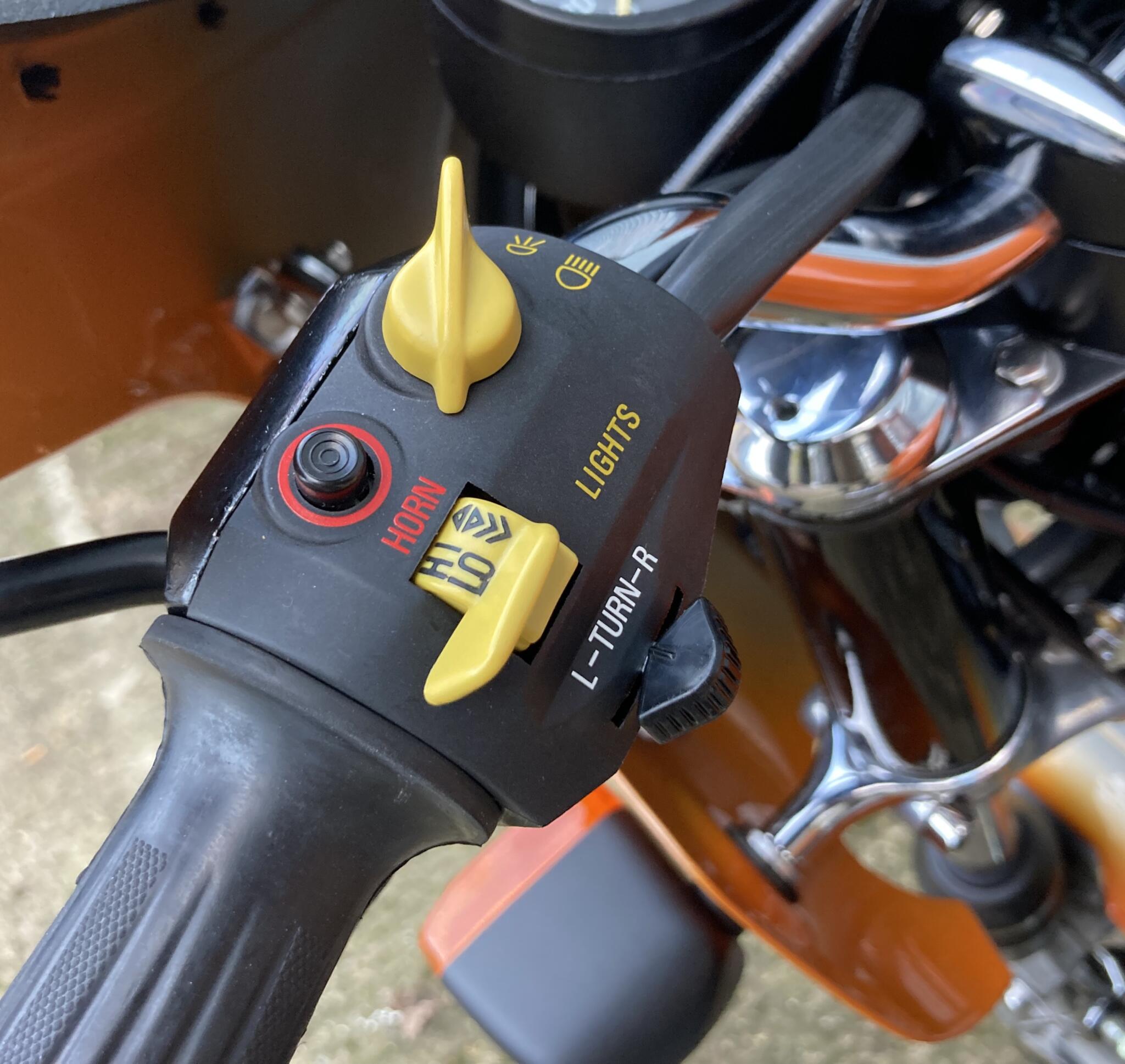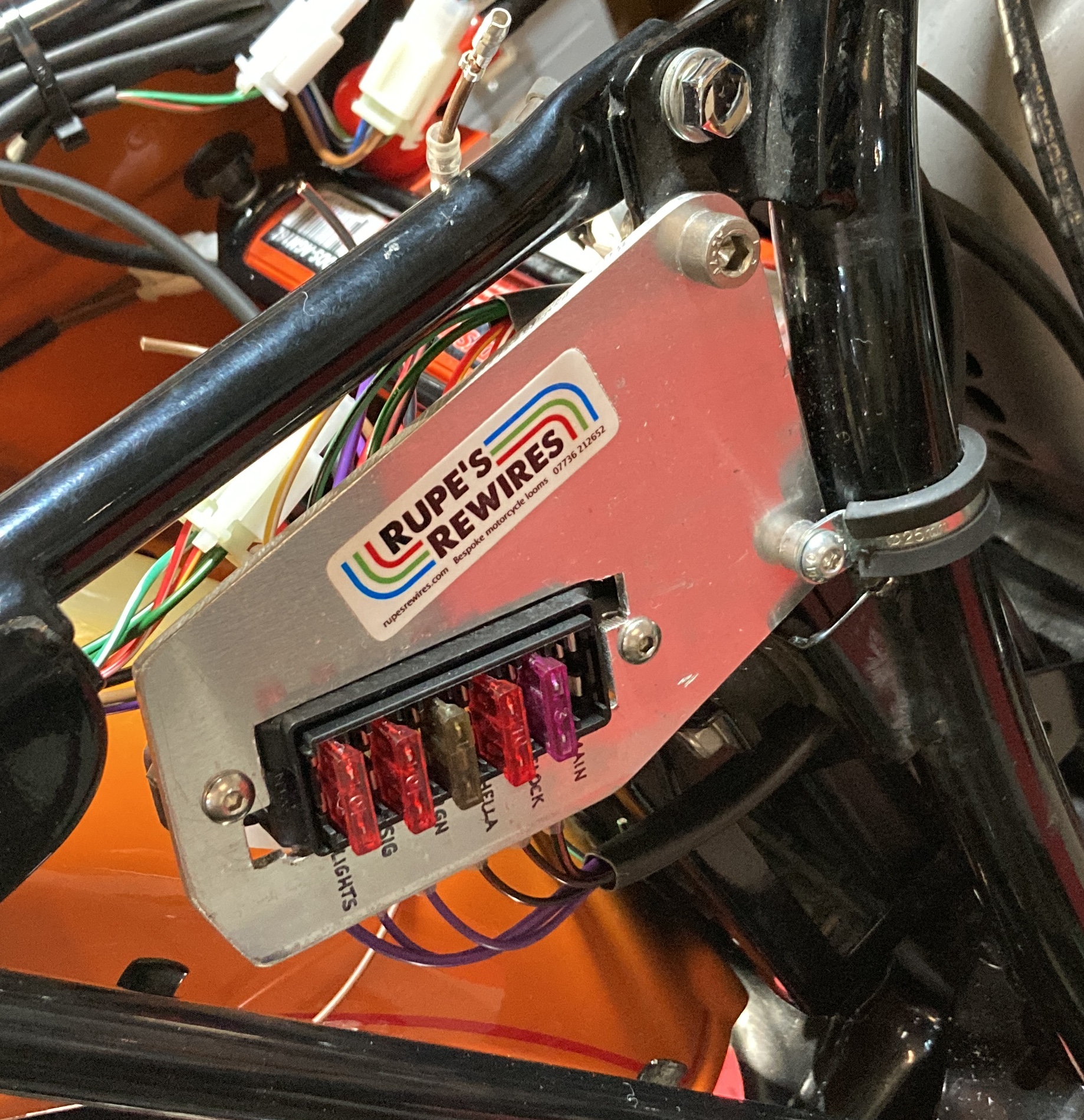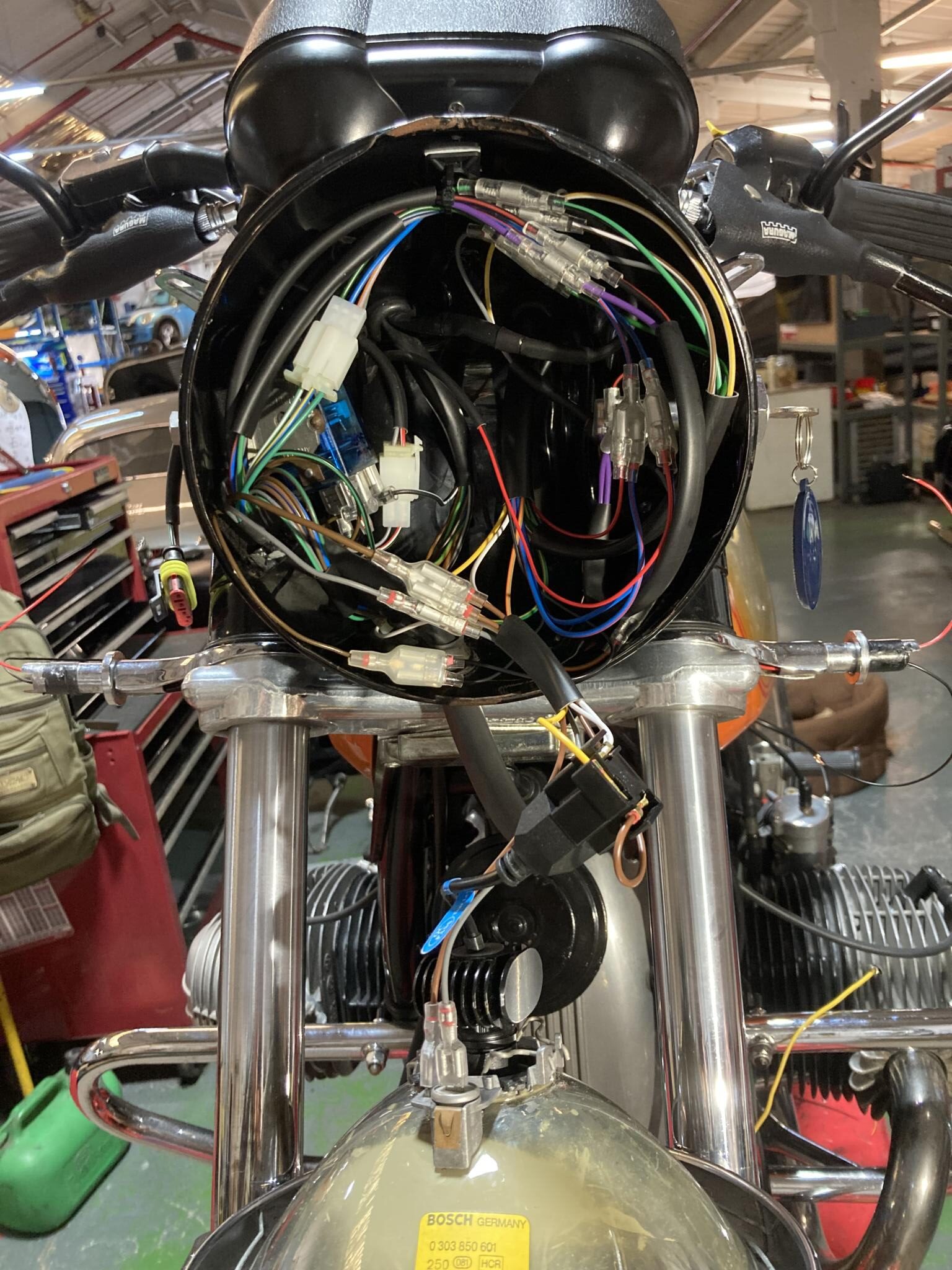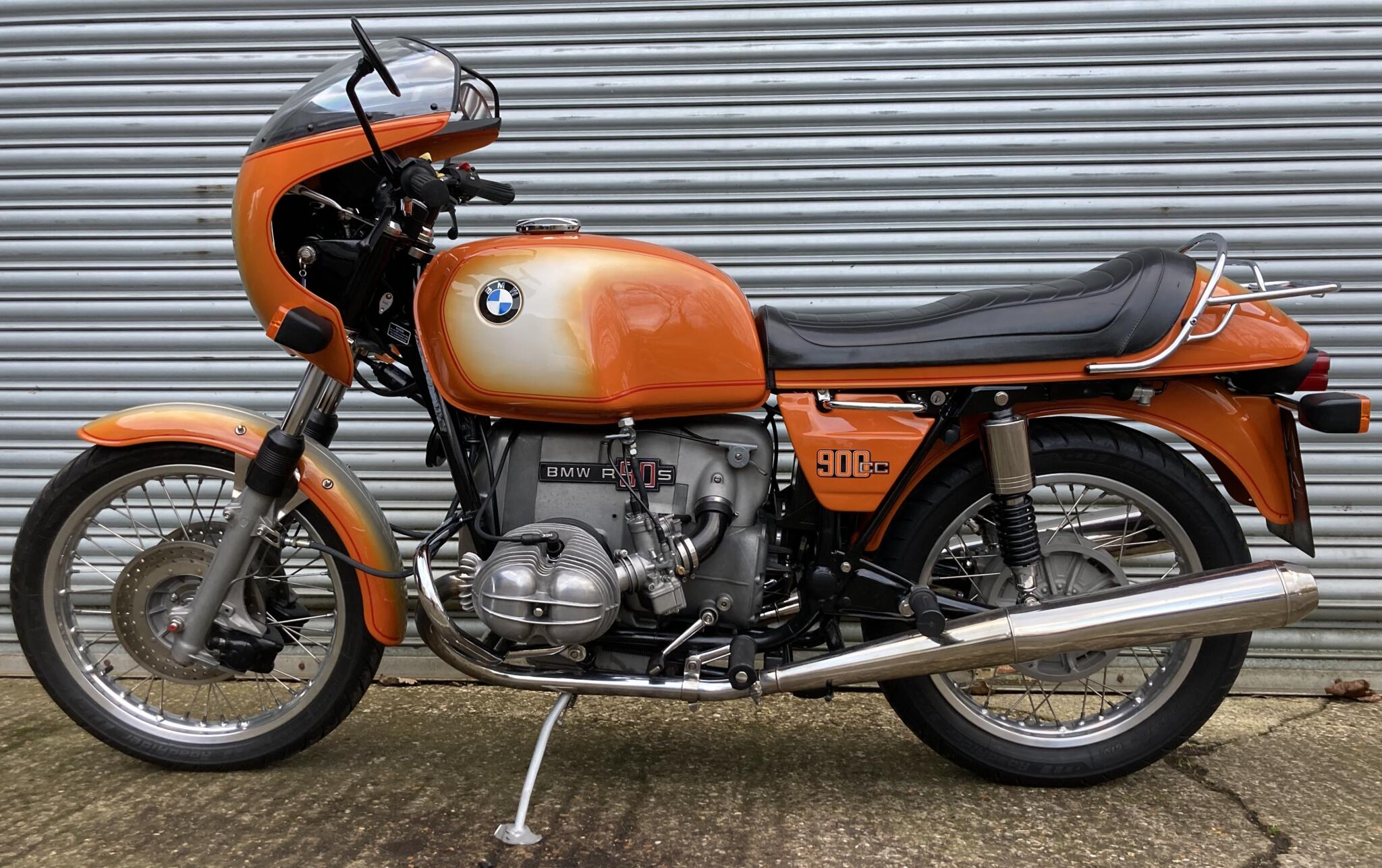
An absolute classic in so many ways. Apologies for the skygazing indicator, since pointed the right way
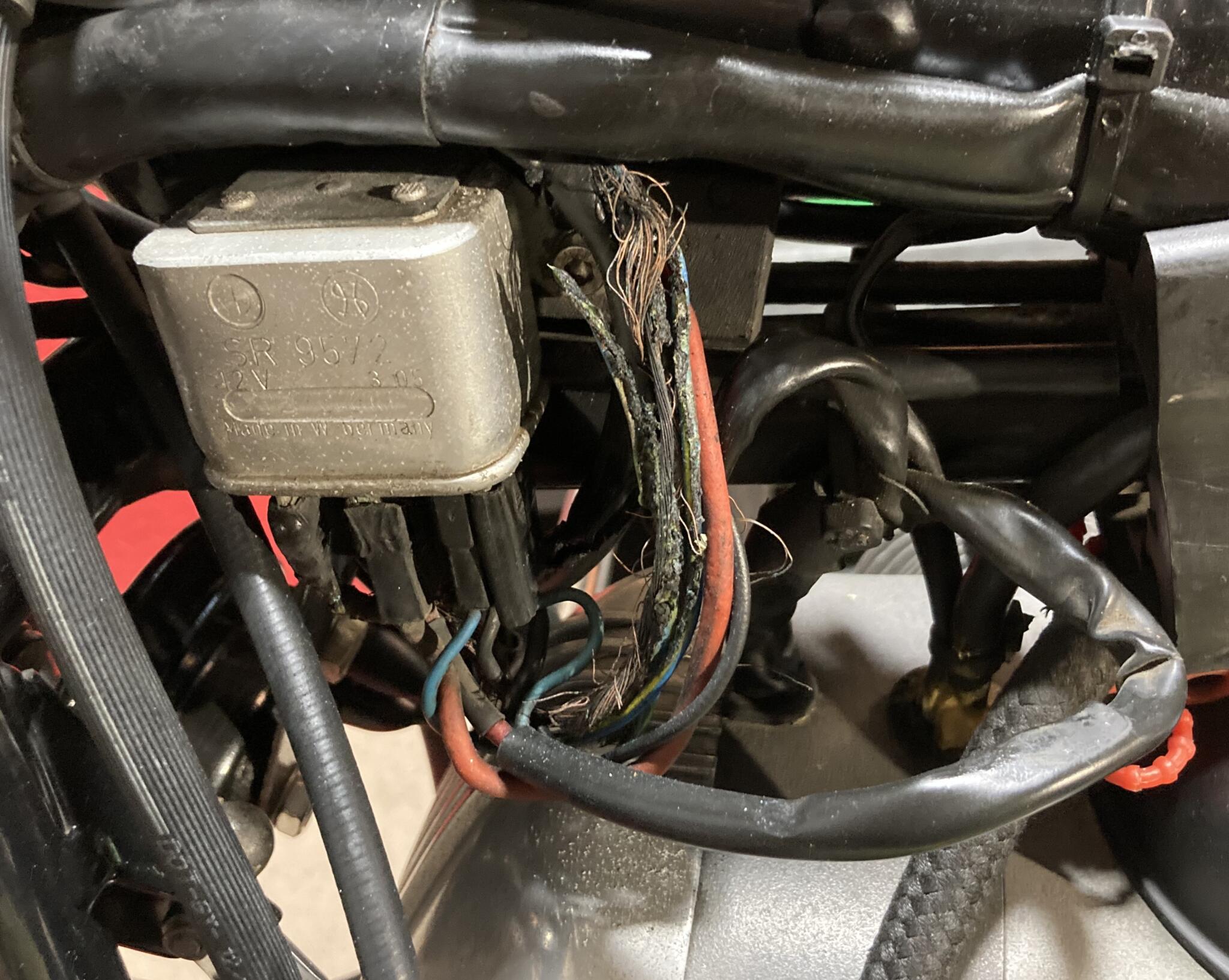
Here is what tends to happen to 1970s boxers. This is the starter relay, and we’ve had a little burning under the tank
Ian’s BMW R90S
Along with Chris’s Spondon Ducati, this lovely R90S was my most challenging job of 2024. It’s a simple bike – but then again, not that simple.
Electrically, and compared with every other motorcycle before or since, 1970s BMWs live on a different planet. Two reasons: 1) a great big connection board in the headlight, and 2) some of the loom is not fused. So if a wire develops a short, as can happen after 50 years, it gets quite serious. This is the third BMW I’ve seen where an electrical fire has got going.
Ian understandably didn’t want any more of that on his beautifully restored boxer. He’d already – yikes! – seen a bit of smoke curling round under the tank.
I reckoned there were six circuits on the bike, each of which needed a fuse: main, power socket, clock, signal, ignition, lights. The only possible place for a six-way fuse box was under the right side panel. Getting it to sit in the right place, without drilling the beautifully powder-coated frame, and without anything being visible from outside, took a bit of head scratching.
With the original R90 handlebar switches gone south, Ian had managed to source possibly the last new pair on the planet, but from an R100 (R90 ones are unavailable). These proved trickier to wire in than you might think. The R100 light switch works via a special relay, so the main headlight feed wire to the high/low beam switch is pretty spindly for a 60/55W bulb, and very difficult to replace with a thicker one. The obvious workaround is a pair of relays, but there’s very little room, and they bring a lot of complication with them. One more snag: the R100 side and tail light switch goes off on full lights.
After more head scratching I went to an LED headlight, which uses far less current than an H4 bulb, and a couple of diodes. That way the R100 switch did the things Ian needed: 1) lights off; 2) pilot and tail (plus instrument lights; 3) everything in (2) plus headlight.
When people chop up old boxers and make them into cafe racers, they are pretty straightforward to wire up. Rewiring a stock bike is a lot more difficult, mainly because there is so little space and the original wiring arrangements are so odd. But it’s very pleasing when everything comes right at the end.
